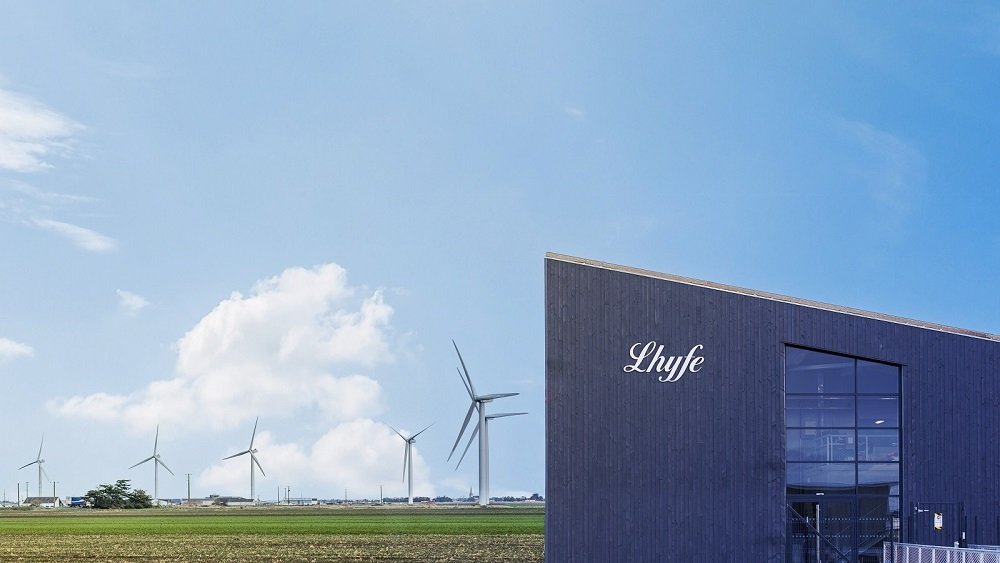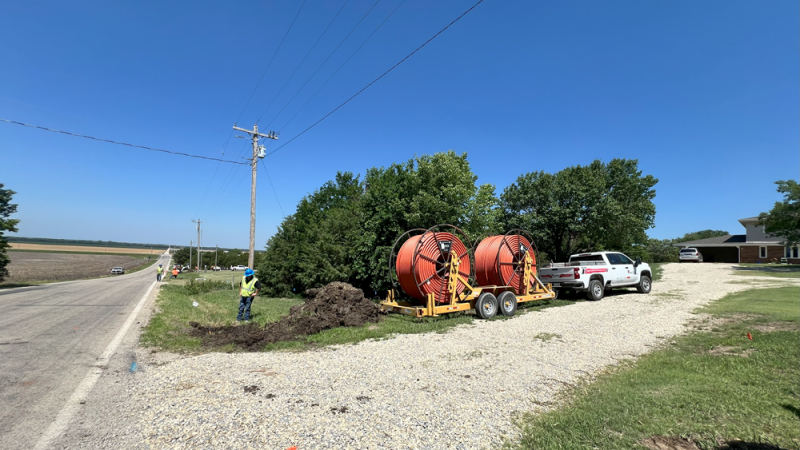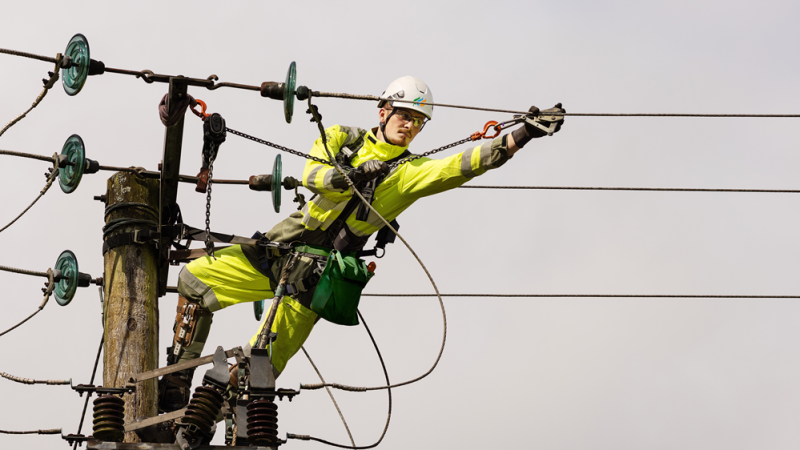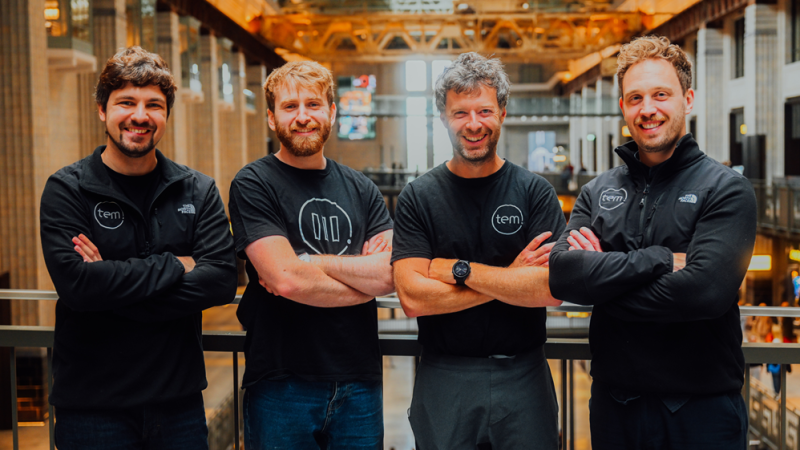Launched in Nantes, France in 2017, Lhyfe is a European group devoted to the energy transition and is a producer and supplier of green and renewable hydrogen. Its production sites and portfolio of projects are intended to provide access to green and renewable hydrogen in industrial quantities and to enable the creation of an energy model capable of decarbonising entire sectors of industry and transport.
Head of Central and Eastern Europe, Luc Graré summarised the business: “We make green hydrogen using renewable energy, meaning wind and solar – the two sources of renewable energy classified by the European Union for the production of the end-product – green hydrogen.”
This is done within the electrolysis process, he explains, which basically needs four stages: connection to a renewable energy source; the pumping and electrolysis of water; the extraction of hydrogen and release or specific use of oxygen; and the purification and compression of the resulting H2.
The race towards decarbonisation
Today, Lhyfe employs over 170 people and is represented in 11 European countries. Mr Graré explains that business development has been fast. “The company was established in 2017, and in 2019 the first series of financing round was completed. Back in May 2022, the company was listed on Euronext in Paris.”
He points out that when he joined the business in 2020, the company employed just 14 people. The following year Lhyfe started to massively scale up the organisation, recruiting some 80 people, 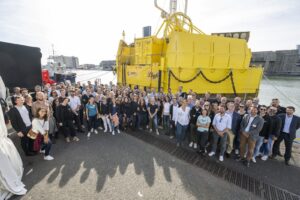 and attracting more investors. As one of them, at the beginning of 2022, EDP Renewables, one of the largest renewable energy companies, stepped in – a major milestone.
and attracting more investors. As one of them, at the beginning of 2022, EDP Renewables, one of the largest renewable energy companies, stepped in – a major milestone.
“The scaling-up was achieved during the pandemic, which was a great achievement, and it somehow characterises the spirit of the company. We are driven by the need for decarbonisation, and that commitment is rooted deeply in our DNA,” says Mr Graré.
“We believe there is no time to lose, and we are ready to progress full steam to assume a major role in helping to decarbonise the industry and the mobility sector. We understand the technology, and we are ready to invest in this technology.”
He explains that the company has a team of people looking for suitable locations with good connections to the grid and good proximity to potential customers. “The market is quite sizeable, and there are EU programmes that would support companies in switching from old technologies to more environmentally production processes. That is the future.”
Defined expansion
He further explains that the company has a clear road map for business expansion, with several progress stages defined: first, the company has committed to deliver green hydrogen by 2025 to any area in a selected number of countries – Germany, the Benelux countries and France.
This will be achieved with a network of 10-20 MW plants, from which compressed hydrogen will be delivered by truck to customers within a 200 km radius.
The next stage is to increase output, at the time that natural gas pipeline operators start to refurbish their pipe network to be used for the transport of green hydrogen, creating a robust hydrogen backbone running through Germany, Netherlands, and Belgium and later expanded throughout the whole of Europe.
The plan is to build large plants (over 200 MW), first in the northern Netherlands (Delfzijl), followed by several locations in Germany, with good access to offshore wind energy and connection to the hydrogen backbone. The first plant is expected to be in operation by the beginning of 2027, which would kick off the second stage.
In the third and last stage, i.e. roughly by 2030, the company envisages the offshore production of large amounts of hydrogen, connected via pipelines to national hydrogen backbones in coastal countries. This long series of deployments aims to have over 3 GW of installed capacity by 2030.
First in offshore
Lhyfe’s ambitious plans have already started to materialise. In 2021, the company inaugurated the world’s first industrial-scale green hydrogen production plant interconnected with a wind farm in France, and in 2022 achieved another significant milestone when it inaugurated the first offshore green hydrogen production pilot platform in the world.
Located in the port of Saint-Nazaire, France, the platform, called Sealhyfe, has the capacity to produce up to 400 kg of renewable green hydrogen a day, equivalent to 1 MW of power. Beginning in 2023, the platform will be placed in the Atlantic Ocean, about 26 km from the coast and directly connected with a wind turbine at sea.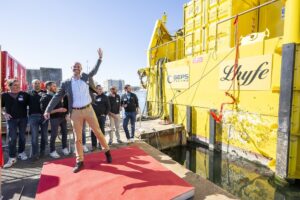
Lhyfe is convinced of the central role offshore has to play in the upscaling of renewable green hydrogen production across the continent.
“Producing hydrogen using offshore wind turbines could allow all maritime countries to access renewable green hydrogen, produced locally, beyond the line of the horizon, and in industrial quantities, to decarbonize transportation and industry,” says Mr Graré.
Following the trial’s conclusion, Lhyfe expects to have a substantial volume of data which it can then use to design mature offshore production systems, as well as to deploy robust and proven technologies on a larger scale, helping it to drive towards the EU’s goal of 10m tonnes of renewable hydrogen by 2030.
For a greener world
In the meantime, further success has been achieved on land – the company has signed an agreement with Schaeffler, a leading global supplier to the automotive and industrial sectors, to build and operate an electrolysis plant on Schaeffler’s factory premises in Bavaria, Germany. The goal is to supply not just the company but other entities in the region with approx. 3.7 tons of green hydrogen every day, starting in 2025.
More progress is to be achieved in France – in February 2023, the company announced that it has obtained a construction permit for its second green and renewable hydrogen production site in the Morbihan region of Brittany, to be operational by the second half of 2023.
Mr Graré affirms that this outstanding progress could not have been achieved without the company’s committed teams of people, and, not surprisingly, the company does not suffer from any shortage of labour.
“We see that a lot of people today, including young university graduates, people who think differently, want to work for companies like ours, companies with a clear vision to help the planet. We don’t have any kind of fossil heritage. We are honest about our purpose, we believe strongly in our contribution to a greener world, and that makes a great difference,” he concludes.
